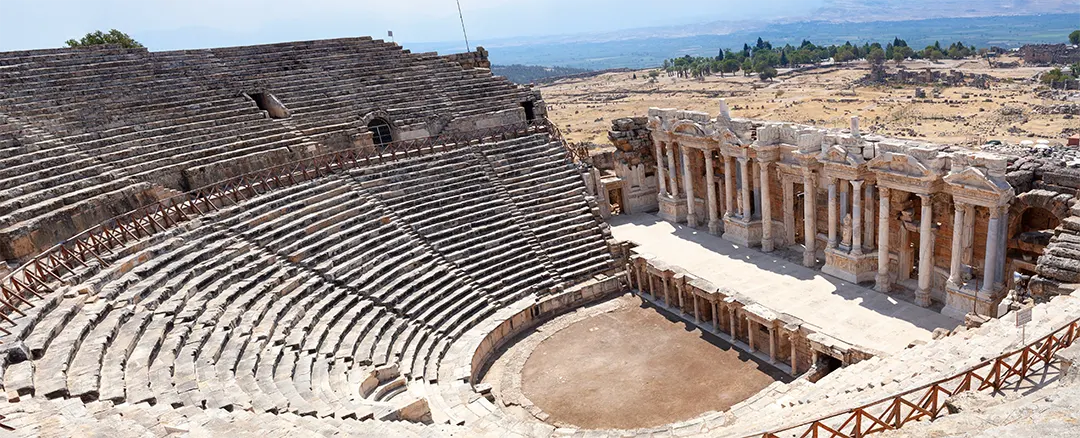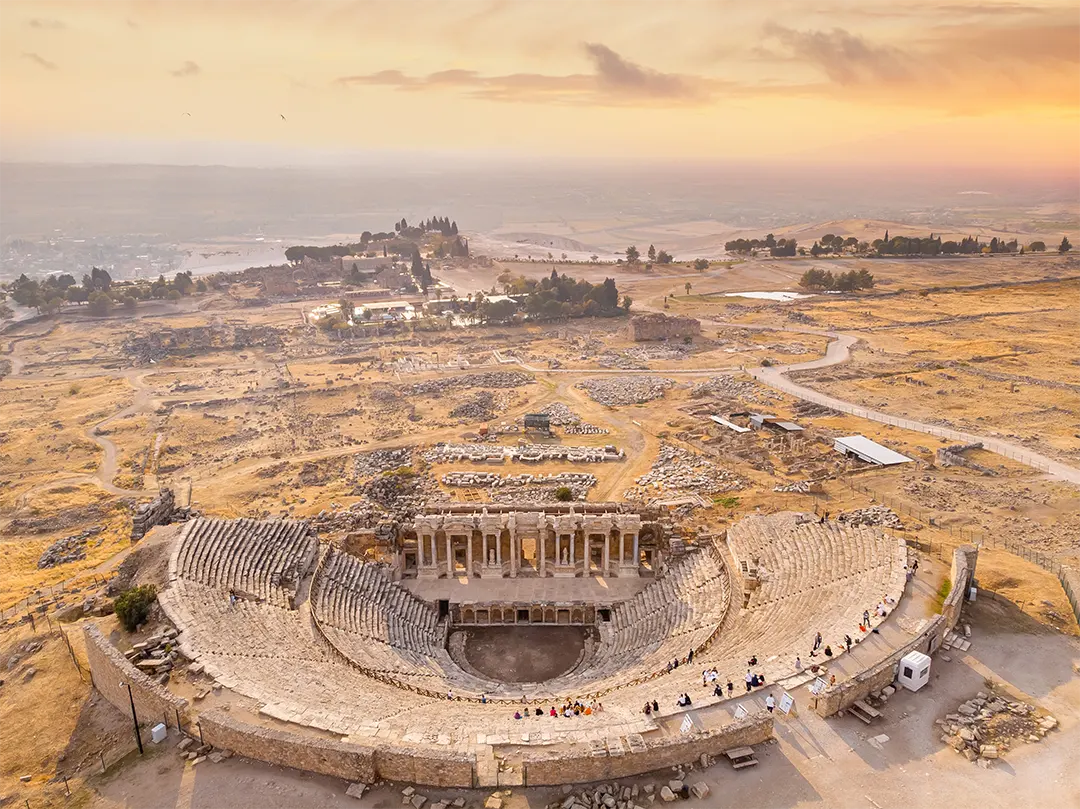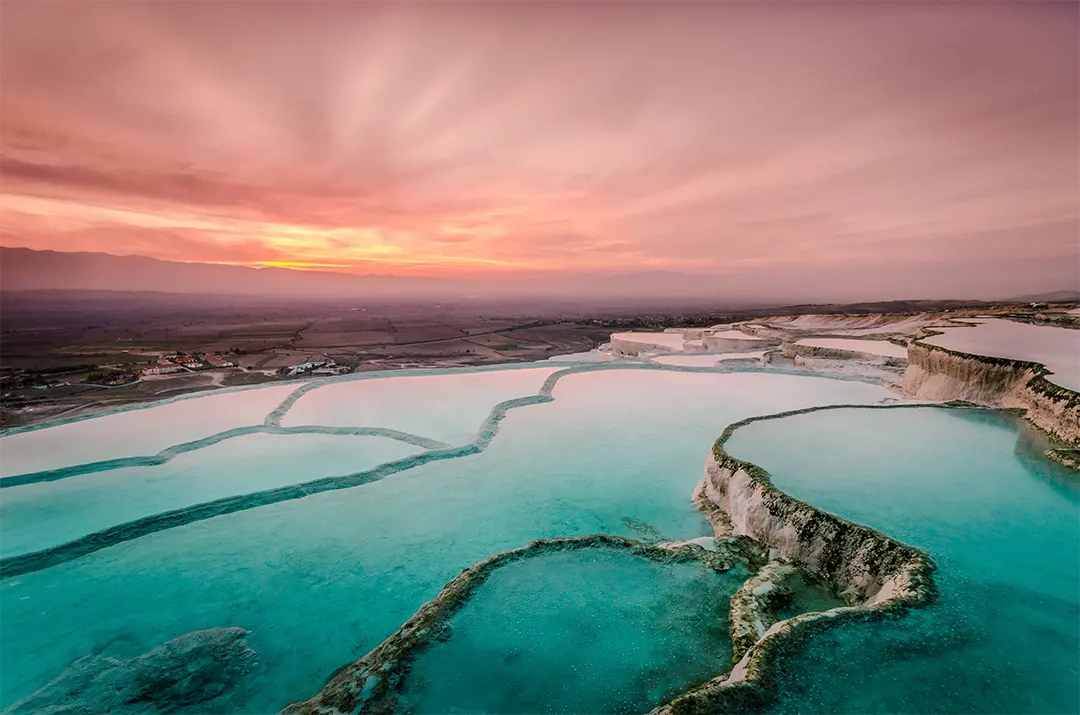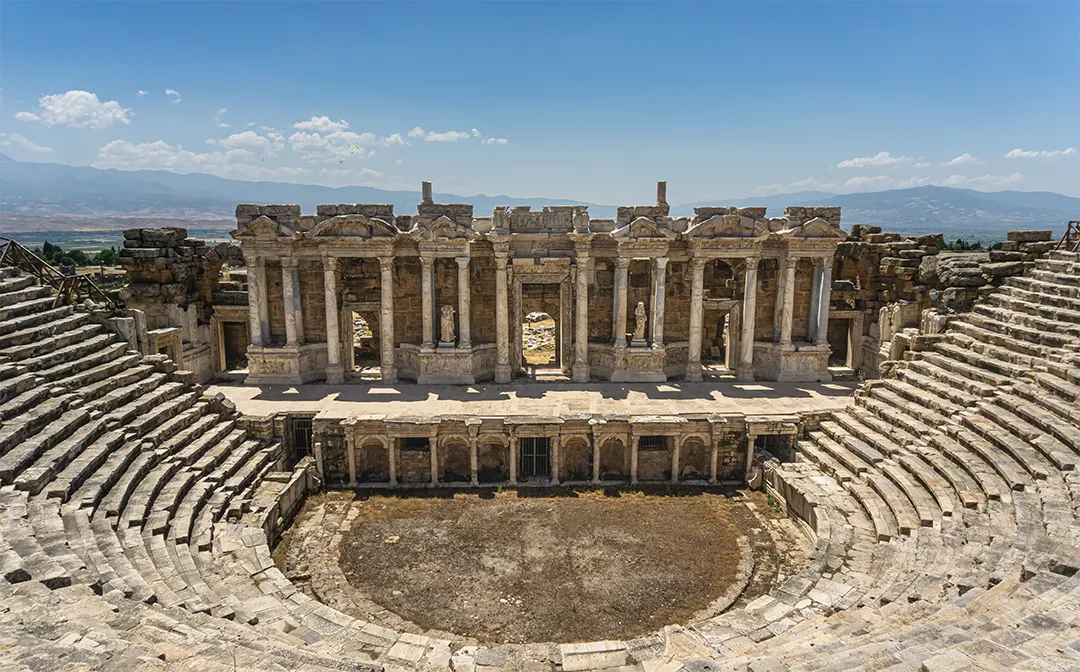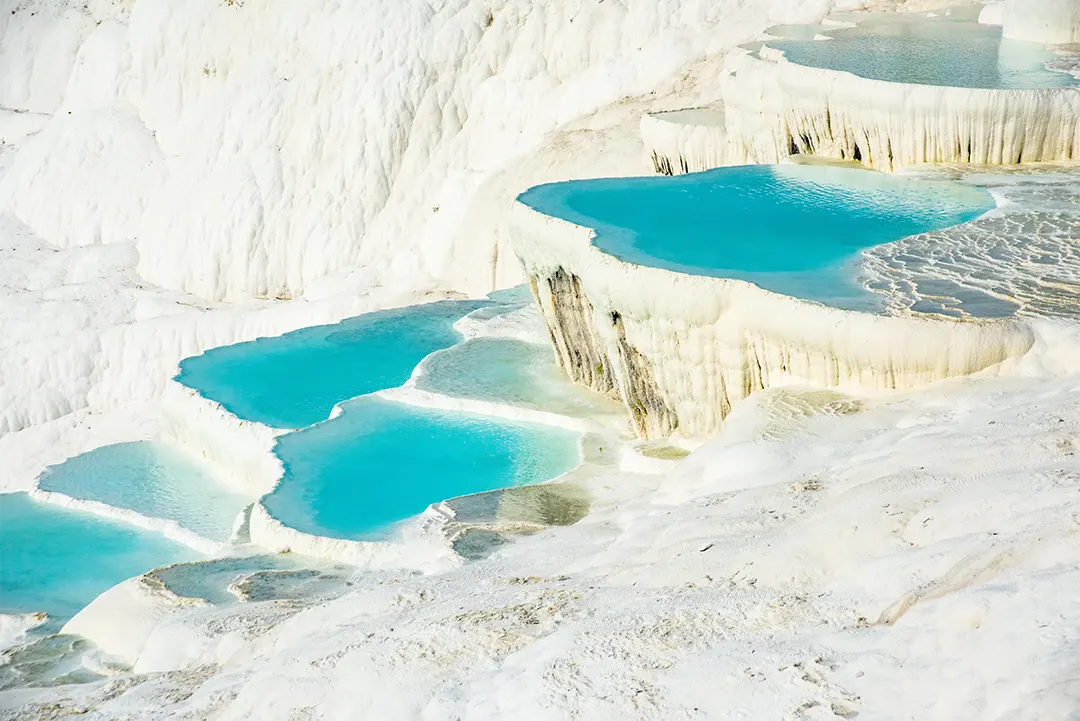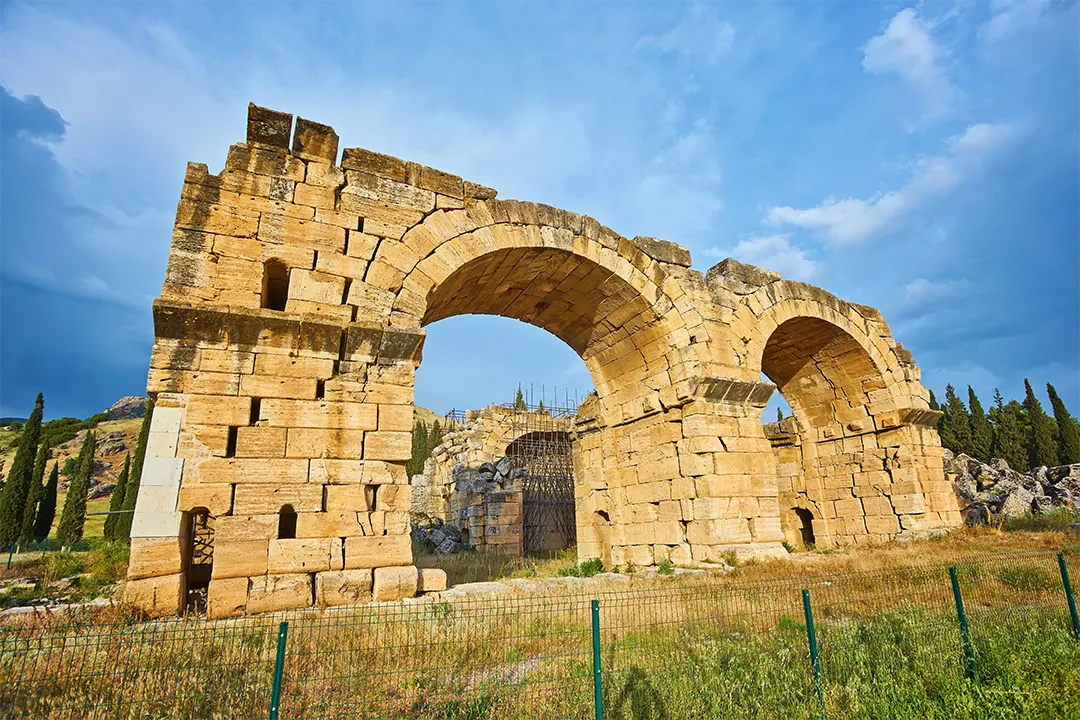Pick-up-6:15 Drop-off -22:00 (Approximately)
LUNCH is included at a famous Turkish restaurant.
TOUR PROGRAMME:
- Departure from hotel
- Arriving in Pamukkale by the route
- Korkuteli, Çavdır, Acıpayam
- Lunch
- Hieropolis Ancient Site, The Travertine Basins
- Taking pictures and swimming pause
- Shopping break
- Back to Antalya and transfer to the hotel.
PAMUKKALE (HIERAPOLİS):
Located 20 kilometers from the town of Denizli in the Aegean region of Turkey, Pamukkale is one of the most interesting places in the world, justly famous not only for the entrancing beauty of its unique geological formations but also for its historical remains. The calcium oxide-rich waters flowing down the southern slope of Caldag located north of the ruins have, over the millennia, built
up deposits of white travertine on the plateau thus fully justifying both the site’s ancient name of Hierapolis (Holy City) and its modern one of Pamukkale (Cotton Castle).
Ancient Hierapolis appears to have been founded by King Eumenes II of Pergamon and its name is derived from Hiera, the wife of King Telephos, the legendary founder of Pergamon. The city became subject to Rome in 133 BC. In 17 BC. During the reign of Tiberius it suffered a heavy earthquake that substantially destroyed the city, requiring it to be rebuilt. Preliminary excavations at Hierapolis were undertaken by a German team towards the end of the last century. Since 1957, excavation and restoration work has been going on under the direction of an Italian group of archaeologists from the University of Lecce sponsored by Fiat.
TRAVERTINES:
The term travertine comes from Roman times, in reference to the great travertine sediments of Tivoli in Italy. The travertine is stone kind which results from complicated chemical reactions that have many causes, many facets and they are largely dependent upon the surroundings. The geological phenomena which compose Pamukkale Thermal Springs, affect a wide area. In this area, there are 17 hot water springs in which the temperature changes between 35 and 100 degrees. The thermal springs of Pamukkale form an integral part of the regions which are potential for tourism and have been popular since ancient times. The water that emerges from the spring is transported 320 m to the head of the travertine and deposits itself on a section 60 to 70 meters long covering an expanse of 240 to 300 meters. In little pools side and larger basins, the calcium carbonate which is deposited at first is a soft jelly but with time it hardens and becomes a travertine.
With the reason the thermal water’s effort to deposit on the normal way, travertine emerges. When the calcium carbonate reaches to an excessive amount and the water comes to the land, the carbon dioxide transpires and the calcium carbonate deposits. The depositing goes on while the carbon dioxide in the water and the carbon dioxide in the weather balance.
This reaction is affected by the weather conditions, ambient temperature and the speed of flow duration. Precipitation continues until the carbon dioxide in the thermal water reaches equilibrium with the carbon dioxide in the atmosphere. Measurements made at the source of the springs find atmospheric levels of 725 mg/l carbon dioxide, by the time this water flows across the travertine,this figure falls to 145 mg/l. Likewise calcium carbonate falls from 1200 mg/l to 400 mg/l and calcium 576.8 mg/l to 376.6 mg/l. From these results it is calculated that 499.9 mg of CaCO3 is deposited on the travertine for every liter of water. This means that for a flow rate of 1 ı/s of water 43191 grams are deposited daily. The average density of a travertine is 1.48 g/cm3 implying a deposit of 29.2 dm3. Given that the average flow of the water is 465.2 l/s this implies that it can whiten 13584 m2 a day, but in practice this areal coverage is difficult to attain. These theoretical calculations indicate that up to. 4.9 km2 it can be covered with a white deposit of 1 mm thickness.




